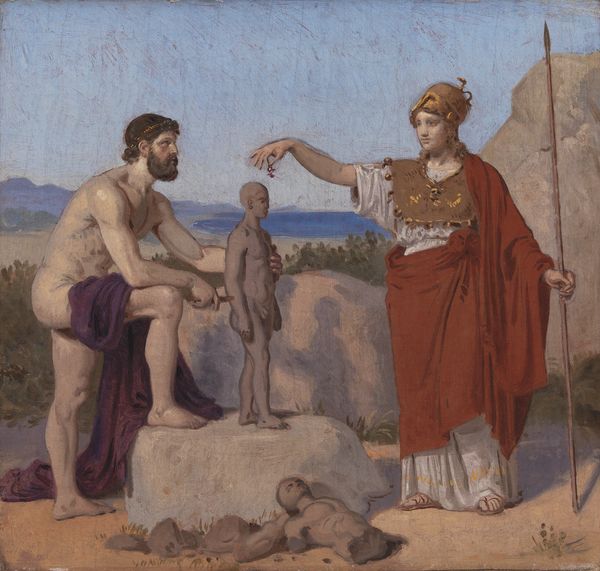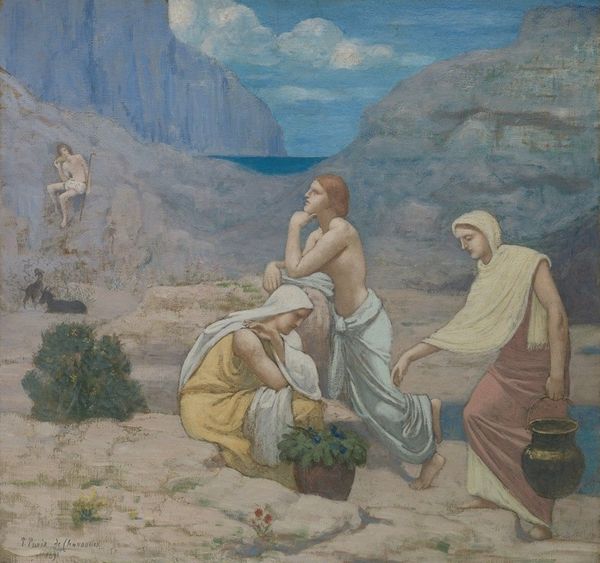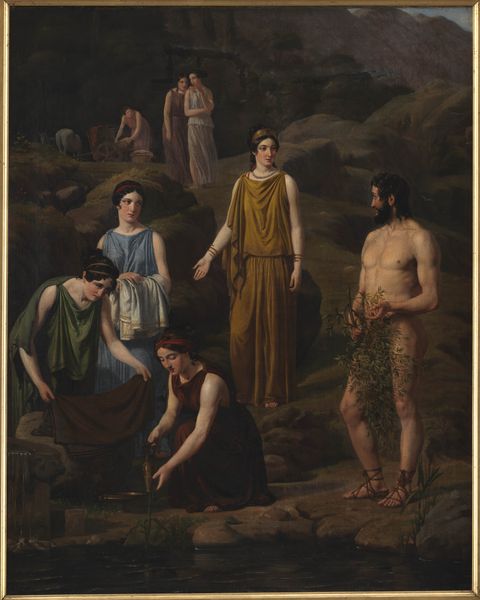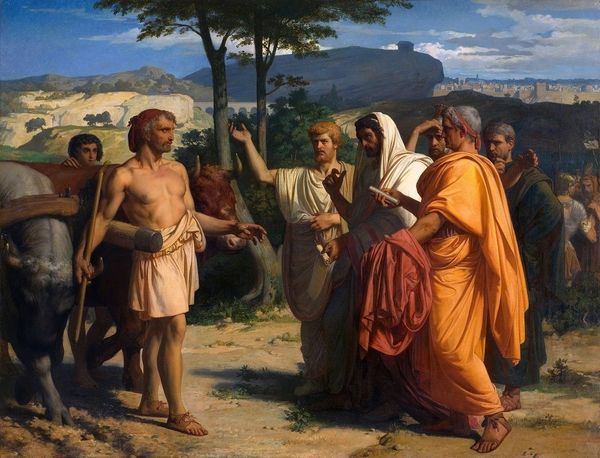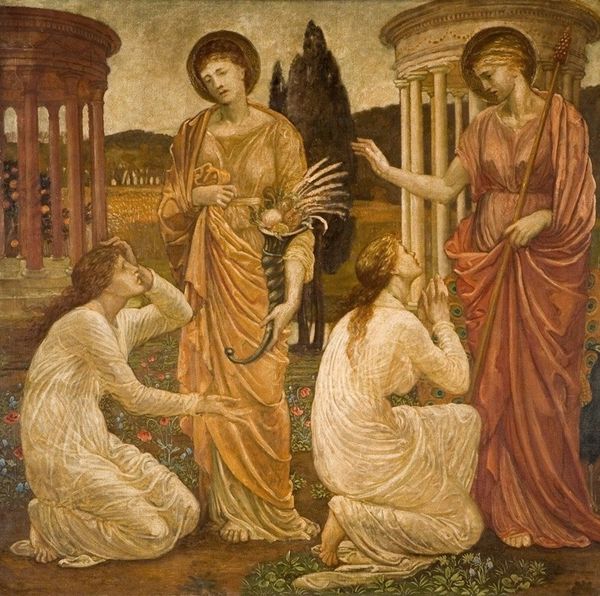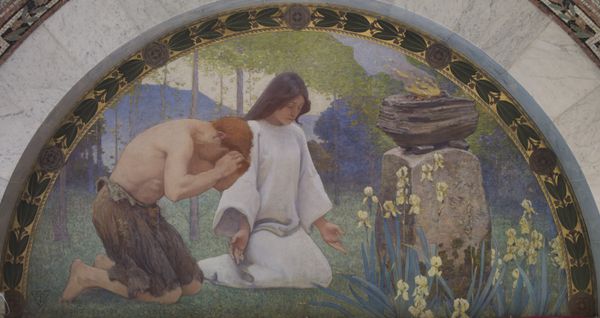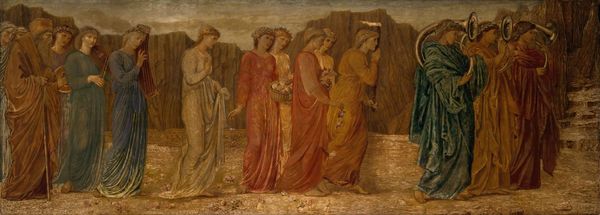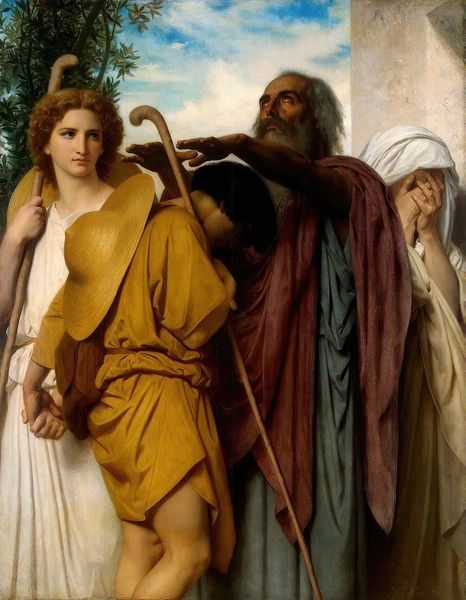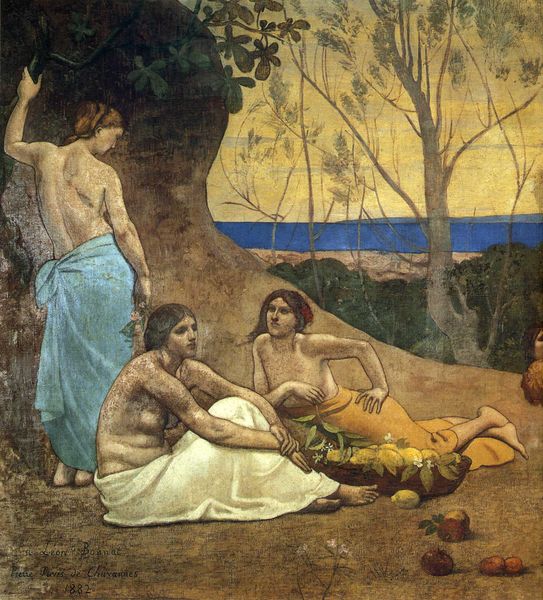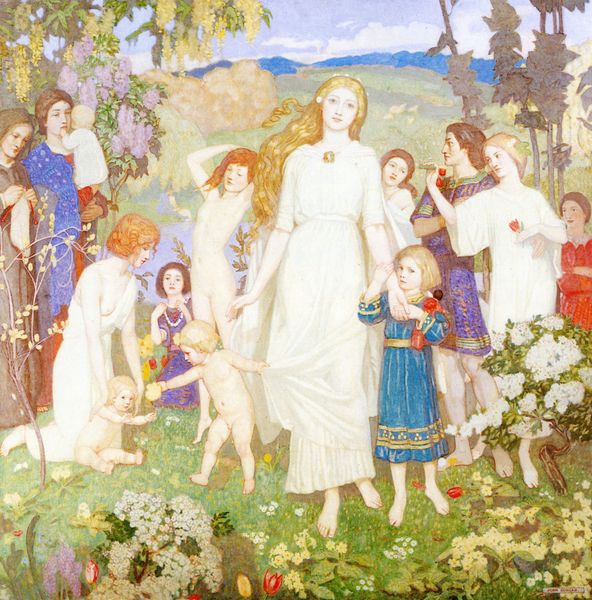
Family. Mural in Lunette from the Family and Education Series 1896
0:00
0:00
charlesspraguepearce
Library of Congress (LOC), Washington, DC, US
Copyright: Public domain
Curator: This is Charles Sprague Pearce’s 1896 oil on canvas mural entitled “Family. Mural in Lunette from the Family and Education Series,” found in the Library of Congress. It certainly sets a tone. Editor: Absolutely. At first glance, the overall effect is quite serene, almost melancholic. There’s a dreamlike quality to the figures and the setting. Curator: Agreed. Pearce masterfully employs a limited palette of earth tones and muted colors, creating a sense of unity across the composition. The lunette shape itself frames the family, enhancing its importance. Semiotically, the arrangement directs our gaze towards the center, towards the woman holding the child. Editor: Placing this within the Library of Congress, this image of generational relationships becomes rather interesting. The progression of ages, of the old and new, as if to underscore the continuation of knowledge, legacy. Even the historical garb of the family group seems meant to signal something. Curator: Precisely. Structurally, Pearce creates a balanced arrangement, the older figures grounding either side while the vibrant family unit occupies the central space. There’s also this very clear triangular form being established. Editor: Considering its original placement, one imagines the socio-political undertones regarding idealized familial values. Curator: Indeed, the style, heavily indebted to Academic art, coupled with its realistic approach, reinforces a specific societal image, one likely reflecting late 19th-century norms. The woman is very Botticelli like. Editor: Perhaps. But what if we consider that "ideal" itself? Who is allowed to take part in this idyllic notion of family? Pearce, whether intentional or not, sparks many questions that go beyond its formal composition. Curator: And perhaps those questions elevate the painting. Editor: No, I think those are vital and important additions to understanding the work. It’s this interplay between history, context, and observation that brings the work to life. Curator: Very well said. The careful structure of this piece provides a clear vehicle for broader conversations.
Comments
No comments
Be the first to comment and join the conversation on the ultimate creative platform.
